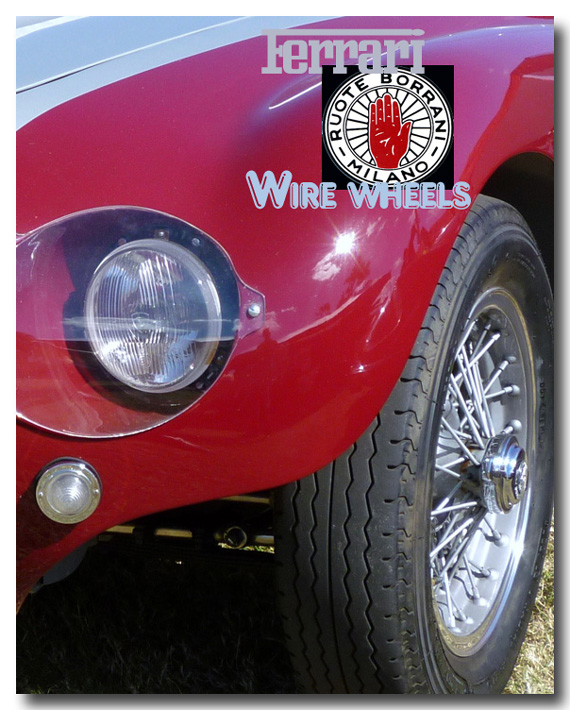By Pete Vack
For over fifty years the cars Enzo Ferrari drove, prepared and later constructed were equipped with the beautiful, functional and strong wire wheels made by Carlo Borrani’s company in Milan. From Grand Prix cars to Le Mans endurance racers to cars for kings, Borrani wheels were a highly visible part of the overall design. Wheels are one of the rare components of a car that must be constructed with beauty, function, safety and performance; Borrani did it best.
Ferrari was a faithful Borrani customer; according to Borrani the alliance began in 1924 when Enzo Ferrari won the Acerbo Cup in Pescara with an Alfa Romeo RL TF equipped with Rudge-Whitworth Milano wheels. Although Ferrrari began racing in 1918, Borrani, founded in only 1922, was probably not the wheel of choice for Alfa Romeo until 1924.
We can be fairly certain that Ferrari won two events of some significance, both with Giulio Ramponi as a co driver. The first was at the Circuito del Savio on June 17th 1923, at Ravenna. It was here that as Ferrari recalls, he met Count Enrico Baracca, the father of the WWI ace. The meeting led to the use of the Baracca shield on his Scuderia cars.
The other victory as mentioned by Borrani, came a year later at the Coppa Acerbo, again with an RL TF. Hull and Slater have the car listed as an RLSS, but Ramponi himself listed it as an RL TF as does Valerio Moretti’s “Enzo Ferrari Pilota”. (What’s it like to drive an RL Alfa? Find out here.)
Most of the races in the early and mid twenties were on rough, dirt roads, while the cars employed stiff cart like suspension. Yet wire wheel failures were relatively rare. The overall reliability and ease of repair of the wire wheel may be a prime reason why the Bugatti cast aluminum wheel failed to catch on when introduced in 1924.
Borrani Historical Stampings
